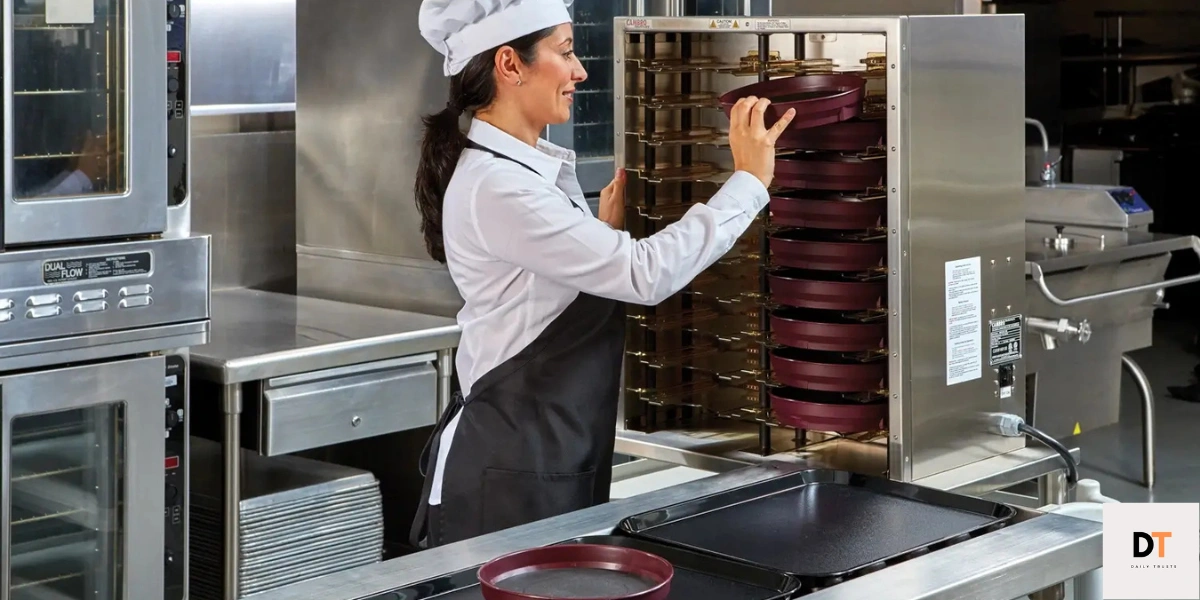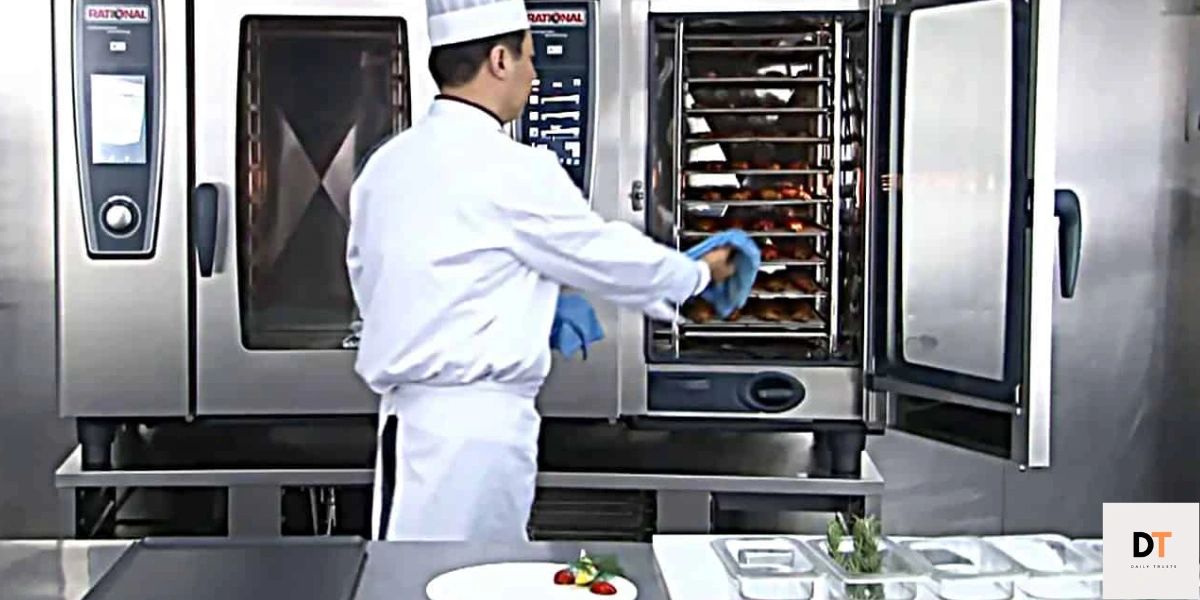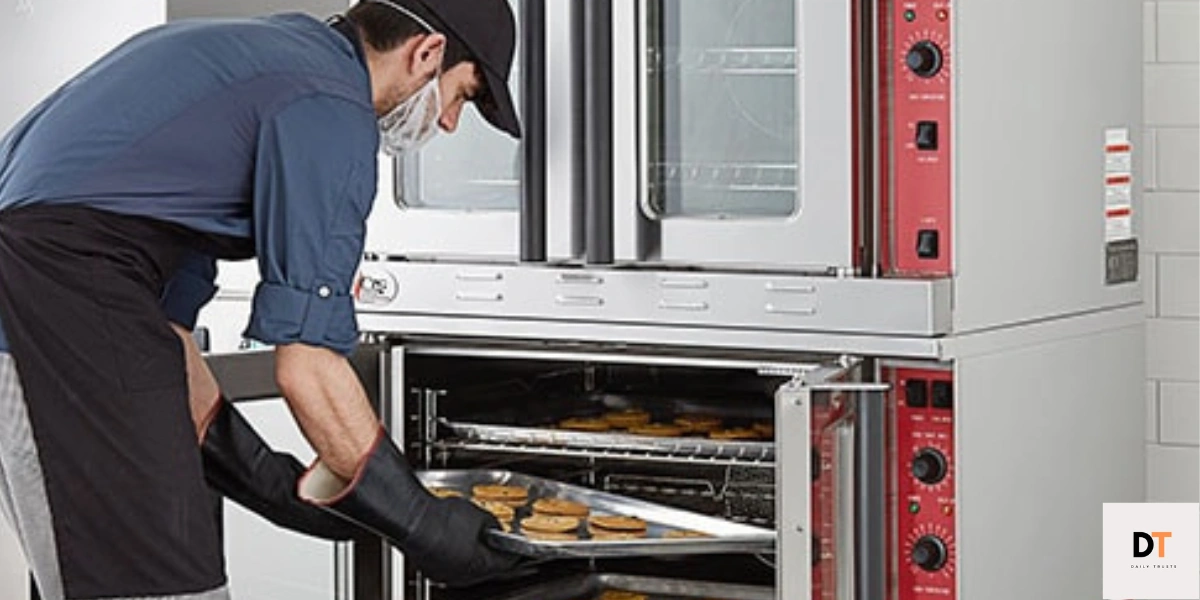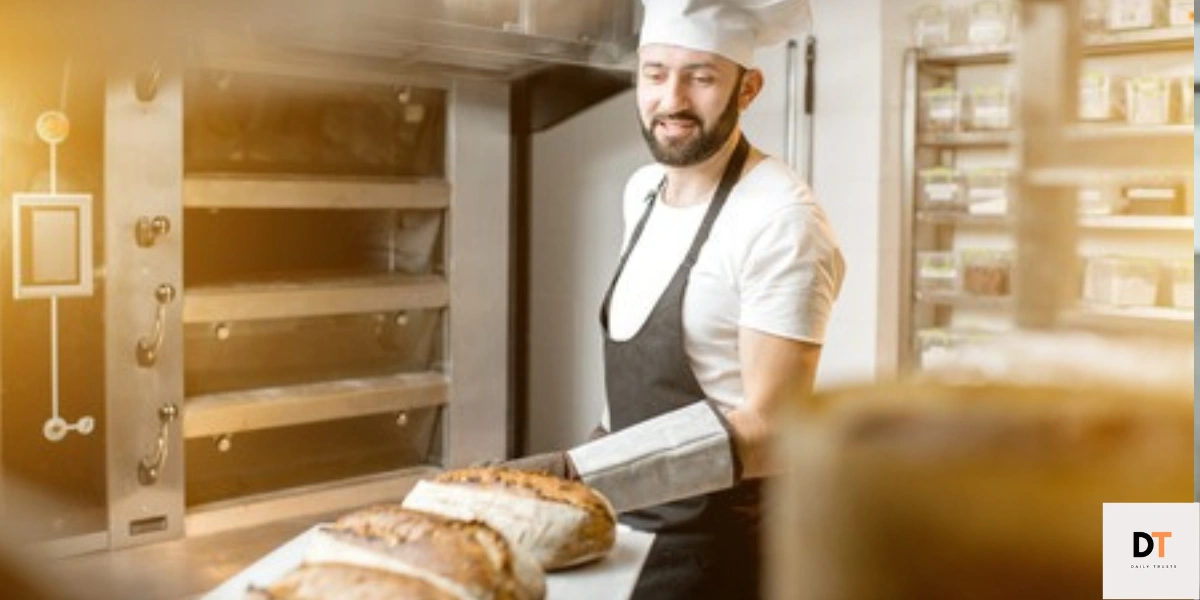How To Choose The Right Commercial Oven For Your Bakery?
It’s important to make a thoughtful choice when selecting a commercial oven for your bakery. A professional oven is an investment, after all. However, the advantages that your new oven will provide will more than offset the price. After all, the caliber of the equipment, especially your industrial bread oven, often dictates how well a commercial kitchen performs.
Think of this month’s blog post as our guide to purchasing a commercial oven, where we’ll go over all the factors you should take into account before purchasing one for your bakery. This covers the various benefits of choosing a professional oven over a less potent regular one, as well as advice on which will best meet your needs.
You May Also Read:
Fashion 6 Cell 11.1v 4001mah-5000mah Dell Laptop Battery Price
Why Choosing the Right Commercial Oven Matters?
A commercial oven is more than just a piece of equipment; it is an investment in the quality and efficiency of your baking. Here are some reasons why selecting the right oven is crucial:

1. Consistency in Baking
The perfect cake requires even heat distribution to ensure consistent results every time. A high-quality oven prevents uneven baking and eliminates the risk of burnt or undercooked layers.
2. Efficiency
Commercial ovens are designed for high-volume production, allowing you to bake multiple cakes simultaneously without compromising quality. This increases productivity and saves time.
3. Durability
Unlike domestic ovens, commercial models are built to withstand the demands of a busy bakery. Investing in a durable oven reduces maintenance costs and downtime.
Which Oven Is Best For Baking?
A larger-than-normal baking oven is necessary for professional recipes and large batches in order to accomplish thorough cooking and even baking. To get the ideal result, more complex recipes will also require more accurate oven temperature circulation.
1. Conventional Ovens
Standard ovens are not commonly utilized in commercial bakeries since they employ radiant heat that comes from the top or bottom. This is not as reliable as other heating methods since it is not dispersed uniformly across the baking cavity. As a result, food items may be cooked unevenly in ordinary ovens, which is undesirable in a professional kitchen setting.
Professional ovens can be divided into two main categories. The first is a convection oven, and the other is a deck oven. Although both are used for cooking, the way each oven works is rather different. What you plan to use your oven for will have a big impact on the type you select!
2. Convection Ovens
The typical commercial oven used in bakeries is a convection oven. Fast-moving fans that circulate hot air in the center of the oven are used to heat the air. This guarantees even heat distribution, avoiding hot and cold patches that cause uneven baking. A thorough, even bake is assured when using a convection oven. Additionally, convection ovens heat up rapidly. Therefore, if you manage a busy kitchen, you can be confident that tasks won’t stop while you wait for the oven to heat up. Additionally, the baking oven’s fast-moving fan will encourage browning and crisping, which makes it perfect for both sweet and savory recipes.
Pans on several racks can heat simultaneously thanks to the circulating air. Therefore, you may cook several batches at once without any problems if you utilize your commercial oven for a bakery. Convection ovens can also produce steam, which makes the ideal conditions for several loaves of bread to swell to their ideal size.
They are perfect for bakeries that need to swiftly create a large quantity of baked items since the heated air cooks food 25% to 30% faster than traditional ovens. They work well for baking large quantities of:
- Pastries
- Cakes
- Pies
- Bread
- Brownies
3. Deck Ovens
In contrast to convection ovens, deck ovens use a heated stone or deck to distribute heat uniformly throughout your food. By using this method, the heat is conveyed straight to the baking sheet pan or product. Because of their effective steam circulation technique, these baking ovens are most frequently used for baking bread. Although there are smaller models if your kitchen is smaller, deck ovens typically take up more space than convection baking ovens since they can hold numerous trays at once. Having said that, their size makes it possible to bake several batches of items simultaneously in a smooth and full manner.
In addition, they are thought to use less energy than a typical convection oven and require less upkeep to function at their best. You may set different baking rates for the various racks by adjusting the heating components manually. In busy bakeries and kitchens when you’re making several batches of goods at once, this is quite helpful. It can therefore be used to bake items such as
- Bread
- Bread made by artisans
- Pies
- Quiche
- Pizza
3. Combination Ovens
Last but not least, a combination oven, often known as a combi oven, is a popular kind of oven that combines the capabilities of a convection oven and a deck oven. Because of its versatility, combination bakery ovens are regarded as the most ideal choice for professional kitchens and commercial bakeries, providing the best of both worlds. Because everything can be baked or cooked in a single oven, they also conserve space.
Benefits of Using a Commercial Oven

- High Productivity: Commercial ovens allow you to bake multiple cakes simultaneously, increasing efficiency.
- Consistent Quality: They provide even heat distribution, ensuring every cake is baked to perfection.
- Versatility: Many commercial ovens can handle various baking tasks, from cakes to cookies and bread.
- Cost Efficiency: Energy-efficient models help reduce operating costs over time.
- Professional Results: Advanced features and controls enable bakers to produce cakes with professional quality.
Key Features to Look for in a Commercial Oven
When selecting a commercial oven for baking cakes, prioritize these features:
- Temperature Control: Accurate and consistent temperature control is essential for baking perfect cakes. Look for ovens with advanced digital controls.
- Capacity: Consider the size and capacity of the oven based on your production volume. A larger capacity oven may be necessary for high-demand bakeries.
- Energy Efficiency: Energy-efficient ovens can significantly reduce operating costs. Look for models with energy-saving modes or certifications.
- Ease of Cleaning: Choose an oven with removable parts, non-stick surfaces, and self-cleaning options to save time and effort.
- Even Heat Distribution: Uneven heat can ruin your cakes. Opt for an oven with features like fan-assisted heating or insulated chambers.
- Durability and Warranty: Invest in a well-built oven from a reputable brand that offers a comprehensive warranty.
Types of commercial convection ovens
What sets apart commercial convection ovens is their:
- Fuel or power source
- Location of the burner
- Features
- Quantity of decks
1. Electric convection ovens
These ovens require no electricity and may be quickly installed in the majority of kitchens. Despite being excellent kitchen workhorses, the larger versions may end up costing more in the long term due to their higher electricity consumption.
2. Natural gas convection oven
Natural gas, which is less expensive and the ideal choice if your kitchen already has a gas connection, powers these commercial convection ovens. Compared to their electrical equivalents, they heat up more quickly. To operate the fans, turn on the touchscreen, run the lights, and other features, they still require electricity.
3. LPG convection oven
An excellent substitute for natural gas is LPG. It is more cost-effective than natural gas, but it is also more efficient. LPG convection ovens require electricity to operate the fan, turn on the touchscreen, power the lights, and other features, much like natural gas ovens do.
4. Direct-fired convection ovens
The burner in a direct-fired convection oven is positioned swiftly beneath the oven, forcing heat into the oven chamber. The heat directly touches the food being cooked after combining with the cavity’s recirculated air. It is most effective when baking pizza, flatbread, biscuits, crackers, and cookies at temperatures above 1,000 degrees.
5. Indirect-fired convection ovens
The burner in these ovens is never in direct contact with the combustion products or recirculated air. They take longer to cook food and do so more slowly than direct-fired ovens, but they yield more consistent results, which is why cakes, cupcakes, pies, and other baked goods are frequently baked in them. Indirect heat also works better for roasts and casseroles.
Tips for Using a Commercial Oven

- Preheat the Oven: Always preheat the oven to the required temperature before placing your cakes inside.
- Avoid Overloading: Do not overcrowd the oven. Leave enough space between cake pans for proper air circulation.
- Monitor Baking Time: Set timers and check cakes periodically to prevent overbaking.
- Use the Right Pans: Choose pans that are compatible with your oven type for optimal results.
- Keep the Oven Clean: Regular cleaning ensures consistent performance and prevents contamination.
Styles of commercial convection ovens
1. Countertop convection ovens
The purpose of these little ovens is to be placed on countertops. Smaller commercial kitchens such as food trucks, cafés, concession stalls, and tiny takeout joints are perfect for them. Larger kitchens can also be served by more sophisticated and potent commercial countertop convection ovens.
2. Floor convection oven
High-volume kitchens are the perfect fit for these ovens. The smaller variants are better suitable for small kitchens. When space is not an issue, full-size, double-deck units can be used in larger commercial kitchens.
Maintenance Tips for Commercial Ovens
To maximize the lifespan and efficiency of your commercial oven, follow these maintenance tips:
- Regular Cleaning: Clean the oven daily to prevent buildup of grease and crumbs. Use manufacturer-recommended cleaning agents.
- Check the Seals: Inspect door seals regularly to ensure they are intact and airtight, preventing heat loss.
- Calibrate the Thermostat: Test and calibrate the thermostat periodically to maintain accurate temperature settings.
- Service the Fans: For convection ovens, ensure the fans are free from obstructions and functioning properly.
- Professional Servicing: Schedule regular professional servicing to address any potential issues before they become major problems.
Top Commercial Ovens for Baking Cakes

Here are some of the best commercial ovens specifically designed for baking cakes:
1. Blodgett Zephaire-100-G
- Type: Convection Oven
- Features: Advanced airflow system, digital controls, and spacious interior.
- Why It’s Great: Perfect for consistent cake baking and ideal for medium-sized bakeries.
2. Bakers Pride Y-600
- Type: Deck Oven
- Features: Heavy-duty construction, even heat distribution, and high heat retention.
- Why It’s Great: Ideal for bakers who specialize in artisan cakes.
3. Revent 726 Double Rack Oven
- Type: Rack Oven
- Features: High capacity, rotating racks, and user-friendly controls.
- Why It’s Great: Excellent for large-scale production with consistent results.
4. Rational iCombi Pro
- Type: Combi Oven
- Features: Steam and convection modes, intelligent programming, and precise control.
- Why It’s Great: Offers versatility and exceptional control for complex cake recipes.
How Can Creeds Direct Help With Commercial Ovens?
Our staff of skilled bakery experts at Creeds Direct is available to help you with any baking-related issues you may have. We can assist you with any questions you may have about our commercial ovens, other machines, or even the machinery used to make E-Liquid. We carry a range of deck and convection ovens from reputable manufacturers like Tagliavini and Salva. Professional bakers all around the world rely on these well-known producers of bakery equipment to deliver the highest-quality goods and maintain their bakery operations! To make sure you have the durable and high-quality bakery equipment you require, take a look at our selection of commercial bakery ovens today.
The main things to consider before ordering a commercial convection oven
1. What type of food will you be cooking?
Consider the kind of food you’ll be cooking in the oven when choosing the best convection oven for your requirements. Although convection ovens can be used for a variety of purposes, some kinds are better suited for particular kinds of cuisine. For instance, pizza and flatbreads work best in indirect-fired ovens, but cupcakes work best in indirect-fired ovens.
2. How much food will you be cooking?
The larger and more powerful the oven, the more food you will need to cook. Additionally, an industrial convection oven designed for the purpose is required if you need to run the oven for extended periods of time in order to provide multiple batches throughout the day. On the other hand, a less powerful model will work if you only need to use the oven for a single batch or for a short period of time each day.
Importance of a Commercial Oven in Baking

- Consistency in Baking: A commercial oven ensures uniform heat distribution, which is crucial for consistent results.
- Time-Saving: With larger capacities, commercial ovens allow for high-volume baking, reducing production time.
- Improved Workflow: Efficient ovens streamline operations in a busy kitchen.
- Enhanced Product Quality: Precise temperature control and advanced features lead to better textures and flavors.
- Business Growth: High-quality ovens enable bakeries to scale up production and meet growing demand.
Ease of use and cleaning
Compact variants require minimum staff training and are very easy to use. To use a larger and more sophisticated model, though, you might need to teach your employees. Your commercial convection oven’s lifespan can be extended by years with routine cleaning, which also protects food safety. Superior stainless-steel convection ovens with detachable racks and enameled interiors are simpler to maintain. To make cleaning the door easier, look for a model with a seamless, plug-in continuous door seal.
Used commercial convection oven — worth considering?
Purchasing a new industrial convection oven for thousands of dollars can strain your finances. A less expensive, used appliance can be the answer you’re looking for if you’d rather not spend a lot of money on a convection oven. The equipment has been completely reconditioned by us, is usually under two and a half years old, and comes with a three-month parts-and-labor warranty. You can be certain that our Certified Used ovens have plenty of life left in them because industrial convection ovens have an effective, or usable, life of roughly ten years. The “Certified Used” (and clearance) equipment is available for purchase or financing on our website. In Australia, we are among the few, if not the only, financiers of used commercial kitchen equipment.
Conclusion: Commercial Ovens for Baking Cakes
Selecting the best commercial oven for baking cakes is a critical decision that can impact the success of your bakery. By understanding the types of ovens, prioritizing essential features, and maintaining your equipment, you can ensure consistent quality and efficiency in your baking process. Whether you run a small bakery or a large-scale operation, investing in the right commercial oven is the first step toward creating perfect cakes every time.

FAQs: Commercial Ovens for Baking Cakes
We have deeply covered and mentioned everything about Commercial Ovens for Baking Cakes. However, if you have any further questions or concerns, please utilize our Contact Us page to get in touch with our specialists.
1. What is the best temperature for baking cakes in a commercial oven?
The ideal temperature varies depending on the recipe but typically ranges from 325°F to 350°F.
2. Can I bake other products in a cake oven?
Yes, most commercial ovens are versatile and can bake cookies, pastries, and bread, provided the settings are adjusted accordingly.
3. How much does a commercial oven for cakes cost?
Prices vary widely based on the type, size, and features but generally range from $2,000 to $20,000.
4. Is a convection oven better than a deck oven for cakes?
Convection ovens are better for even and quick baking, while deck ovens are ideal for producing moist, artisan-style cakes.
5. How do I know the oven size I need?
Assess your daily production volume and available kitchen space to determine the right size.
